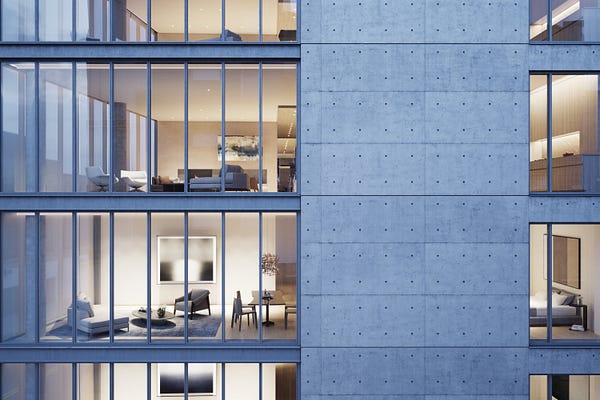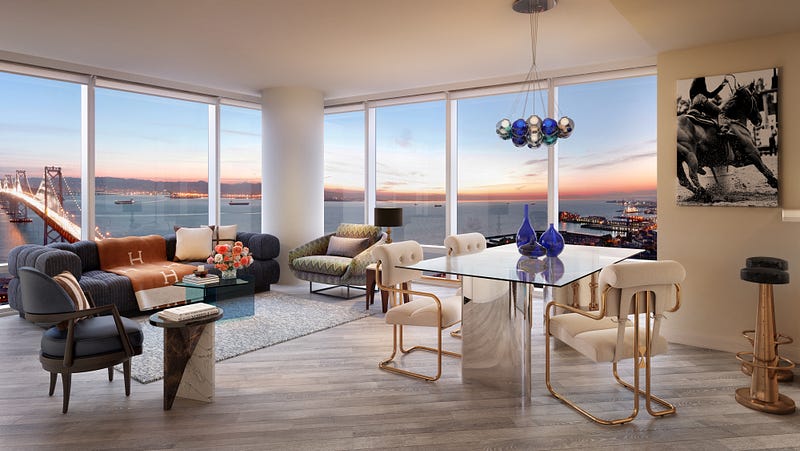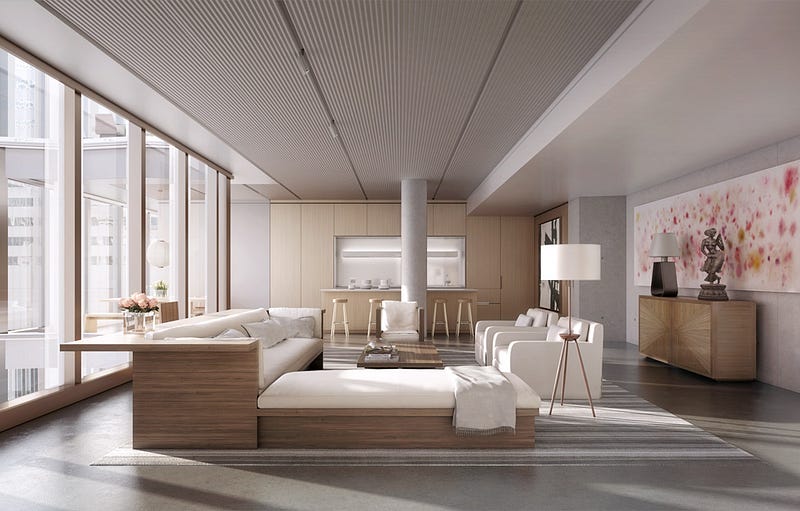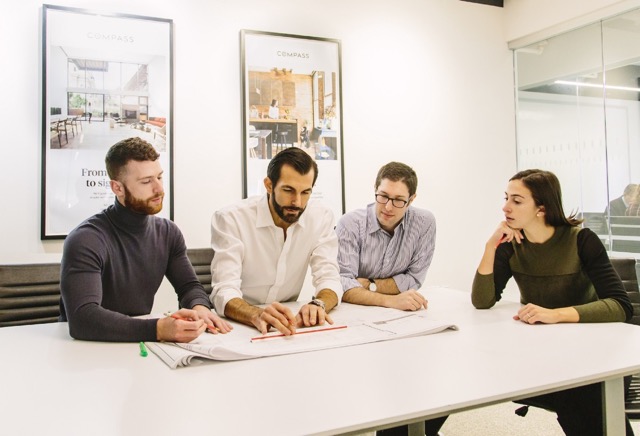What’s on the Horizon for Real Estate in 2017?
By Compass Development
Our development team sheds light on the architects, amenities, and attributes transforming our skylines from coast to coast.
As the bicoastal leaders of Compass Development, Senior Managing Director Justin D’Adamo on the East Coast and Managing Directors Hana Cha and Morgan Ball of Los Angeles are perennially on the pulse of real estate’s newest innovations. Liaising with a diverse group that includes architects, interior designers, landscapers, engineers, and agents, they are tasked with ensuring our projects include the features most valued by today’s buyers. Here, they share what, where, and who is on their radar right now.
What would you say is currently the hottest neighborhood in your city?
Hana: With an influx of creative office space, an abundance of retail, and the forthcoming opening of Soho House and Hotel Americano, Los Angeles’ Arts District has all the ingredients to support a dynamic housing market. To cap it off, SunCal’s colossal mixed-use project 6AM — named for its location on 6th street and designed by Herzog and de Meuron — will add a starchitect pedigree to a community already in the spotlight.
Justin: In Manhattan, it’s most certainly NoMad. Since the NoMad Hotel opened five years ago, the neighborhood’s appeal has continued to rise. Its borders have even grown northward as more and more high-profile hotels, restaurants, nightlife, fitness studios, and services move in.
Morgan: We’d also be remiss not to mention Beverly Hills. Despite its famed reputation, it’s long been a very quiet family community — until now. Internationally recognized architects including Richard Meier and Thomas Juul-Hansen are bringing their trademark out-of-the-box take on vertical living to this traditionally single-family market. We’re keeping a close eye on One Beverly Hills and the old Friar’s Club site next door to the Peninsula at the moment!

The West Coast Compass Development team prepares for a developer meeting at their Beverly Hills office. | Image: Sami Drasin
Considering your market’s unique needs, what features do you see buyers most appreciating?
Hana: For us, it’s about the outdoor space. Patios, balconies, gardens, rooftops, open-air common areas…we’re in California, after all!
Justin: In New York City, space is a limited luxury, and every inch of a home has to be maximized for how people live today. The hottest features are often those with multiple functions: Charging stations in the kitchen that eliminate wire clutter; a countertop with an integrated cutting board; a kitchen island that slides easily from breakfast bar to entertaining space.
How are new development façades changing the local landscape? What exterior materials are gaining traction?
Morgan: When you have the natural landscape we do, there’s no better way to showcase it than with floor-to-ceiling glass. Always.

The first NYC condo building designed by Japanese master Tadao Ando, 152 Elizabeth Street is a study in minimalist concrete and organic elements, including a 55-foot-high and 99-foot-wide living green wall.
Justin: Here, we’re seeing architects push the envelope by using familiar materials in an atypical fashion, rendering a building at once both contextual and unique in its environment. For example, architectural concrete complementing glass and steel at luxury residence 152 Elizabeth, designed by the great architect Tadao Ando, is shockingly stunning yet perfectly fitting.
What are today’s buyers looking for in terms of layout?
Justin: Buyers want flexibility. Designing a unit that can be used by one owner as a one-bedroom with an office and den, and by another as three-bedroom home complete with bunk beds is essential. But as far as I’m concerned? I personally love a formal gallery at the entryway; it allows for a moment of decompression from the outside world.

Designed by Ken Fulk, The Harrison complements its enviable San Francisco Bay Bridge views with a bevy of premium amenities.
What features are universal in their appeal?
Hana: Honestly? Complimentary breakfast. Every morning at The Harrisonin San Francisco, residents flock to the building’s espresso and breakfast bar and make small talk over custom coffees. It’s everyone’s favorite amenity.
Justin: And in terms of architecture, the most luxurious residential buildings in the world — from 100 East 53rd Street, One57, and 432 Park Avenue in New York, to Muse in Sunny Isles Beach, to London’s One Hyde Park, to Burj Khalifa in Dubai, to Monaco’s Tour Odeon — all have at least one thing in common: ceiling heights of at least 11 feet.

Which residential architect’s work are you loving right now?
Justin: There is no one single preeminent architect across the region, though one can certainly say Robert A.M. Stern has been the most prolific of this last cycle with 220 Central Park South, 520 Park, 30 Park Place, 20 East End Avenue, and others to his name. Personally, I am most excited for the US debut of Alvaro Siza, the Pritzker Prize-winning architect from Portugal, at 611 West 56th Street. Better yet, it’s being built by Sumaida + Khurana, perhaps the most profoundly thoughtful developer and steward of important architecture today.
Morgan: LA is only now starting to embrace the importance of architecture in residential design, and at the top of that list are MAD Architects. Based in Beijing with outposts in LA and New York, the firm’s fluid forms and contextual design elements are, well, really cool. Of course, we can’t leave out classic heavy-hitters like Richard Meier & Partners — their work is all about light, space, and bringing the outside in. It’s timeless, and we love it.

